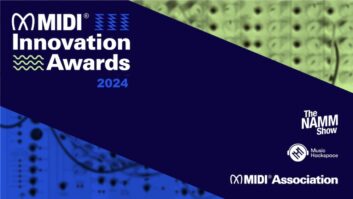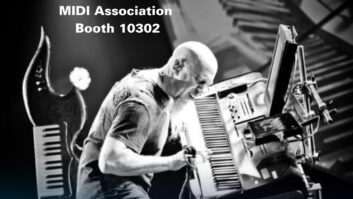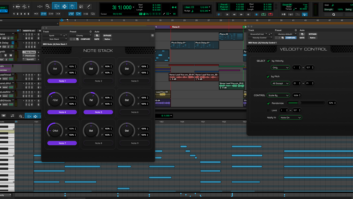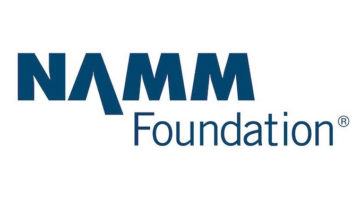Craig Anderton

Although Apple wasn’t at NAMM, it chose that time slot to introduce Logic Pro X 10.3. And in typical Apple fashion, it embodied three of the trends that are making a lot of noise in our pro audio world: touch, the cloud, and MIDI.
Like GarageBand, there’s now support for the Touch Bar, but Logic Pro X doesn’t just offer GarageBand’s relatively simplistic use of it for macros—there’s also a timeline overview, virtual keyboard and customizable keyboard shortcuts. Granted, the Touch Bar hasn’t been hugely popular, but this is one of its more ambitious applications that hints at more potential yet to be exploited—which is important, because Apple still maintains the “touchscreens are for tablets/phones” in contrast to Windows supporting touch on anything that can handle it. Sophisticated use of the Touch Bar could help level that playing field.
Other new features include Track Alternatives (a way to try out playlists of various regions or different versions of tracks), 192 additional buses, updates to the 64-bit summing engine, a minor UI refresh and Selection-Based Processing, which allows working with effects for individual audio regions. But the feature that caught my attention is iCloud sync with GarageBand. It sends what’s essentially a premix to GarageBand so you’re not burning the bandwidth of a large project, and if you add tracks to GarageBand while you’re on the go, the new material will be in iCloud and syncable with the project when you return to Logic Pro X.
This also underscores that “the cloud” continues to grow—and it’s not just about working on a project, saving it to the cloud and having it available wherever you are. Soundsonline has offered its Composer Cloud for a while, where for $29.99 a month (or $299 a year) you can access more than 10,000 virtual instruments; if you need something, download it. However, Roland has now stepped into the cloud world with a subscription-based service for sound libraries and new instruments. While I don’t expect Roland to stop manufacturing hardware, the intention is clear: make the world of synthesis, sampling, and sound libraries more accessible.
Part of Roland’s initiative involves RainLink, which is a hardware/software protocol that provides higher-resolution control for RainLink-compatible hardware. Although some are getting ahead of themselves and calling it a replacement for MIDI, that’s not what it’s all about; it’s more like a parallel supplement.
However, there’s also a lot happening on the MIDI front. Bluetooth Low Energy for MIDI (BLEMIDI) is gaining traction; I’ve been using CME’s Bluetooth keyboard in the studio, and the latency is under 10 ms. Although Apple has supported BLE-MIDI since iOS 8 and OSX 10.10, last year, the Windows 10 Anniversary edition introduced native BLE-MIDI support. (At Winter NAMM, Cakewalk demoed the Zivix Jamstik running with Sonar on a Windows 10 Microsoft Surface Pro with no extra hardware.) Although being able to clean up that neverending tangle of wires in the studio has its benefits, BLE-MIDI also represents a big step forward for mobile applications.
Meanwhile, MPE (MIDI Polyphonic Expression) is close to being finalized. One of MIDI’s traditional limitations, and of electronic instruments in general, is an inability to approach the kind of expressiveness associated with acoustic instruments. MPE allows expression for individual notes within a polyphonic data stream by maximizing the use of MIDI channels to allow per-note control of pitch, volume, timbre and more. Championed by ROLI, Roger Linn and others, MPE is already proving its worth with next-gen electronic controllers like ROLI’s keyboards and the Linnstrument.
Windows 10 has also graduated to Multi-Client Support for MIDI, which is basically geek-speak for being able to run several MIDI programs at once on the same computer. This is helpful for working with DAWs because often, virtual instruments or processors communicate with editing programs via MIDI—and without a multi-client system, you can’t use MIDI with them and a DAW at the same time. Furthermore, Chrome and Opera now support the Web-MIDI API (which is what allowed you to play a synth on Google’s home page when it did its tribute to Bob Moog). Although Firefox support is in progress, Microsoft and Apple aren’t committed to supporting it yet—but it probably won’t take long before they figure out this is a feature worth adding.
2017 is shaping up to be perhaps the most important year for MIDI since its introduction. Fold in Bluetooth, the cloud and the ever-evolving world of DAWs, and it should be a fun ride.







